Information on the RDSP
The Registered Disability Savings Plan (RDSP) provides tax-free money for people who have qualified for the Disability Tax Credit. The RDSP helps to provide additional long-term financial security for people with a disability.

Many people don’t know that retroactive to 2021, people with type 1 diabetes (T1D) now automatically qualify for the Disability Tax Credit (DTC) as a result of significant advocacy by Breakthrough T1D and the T1D community (learn more). And qualifying for the DTC is the first step to opening an RDSP.
There are many benefits to opening an RDSP as the money contributed grows tax-free. As well, anyone – like a grandparent or another family member can contribute to an RDSP with the written consent of the account holder.
RDSPs are a long-term savings plan to help later in life for long-term medical expenses. It can also provide additional financial security in case something happens to a parent of a child with T1D.
Benefits of opening an RDSP
- Money contributed grows tax-free.
- Anyone can contribute to an RDSP with the written consent of the account holder.
- Contributions can be matched, based on family income, with up to $3,500 a year in Canada Disability Savings Grants (CDSG) and up to $1,000 a year in Canada Disability Savings Bonds (CDSB).
- Carry forward on CDSG and CDSB is available back 10 years or to date of diagnosis.
- The total lifetime contribution for each beneficiary is $200,000, with no annual contribution limits.
- If a parent or grandparent passes away and has a financially dependent child or grandchild, they can transfer up to $200,000 of their Registered Retirement Savings Plan/Registered Investment Fund (RRSP/RRIF) or Registered Pension Plan (RPP) to the dependent’s RDSP on a tax-deferred basis.
Who is eligible for an RDSP?
To qualify for or be the beneficiary of an RDSP the person must:
- Be eligible for the Disability Tax Credit (an individual with T1D automatically qualifies)
- Be a resident of Canada.
- Have a valid social insurance number.
- Be under 60 years of age.
There can only be one RDSP account per beneficiary, and only one beneficiary per plan.
How to contribute to an RDSP?
Contributions for RDSPs can be made through your bank or financial institution and invested in a way that best suits you and your family’s personal investment plans.
There are five ways to contribute to your Registered Disability Savings Plan:
- Contributions by the account holder.
- Contributions by people the account holder has authorized.
- Federal grants and bonds.
- Transfers from an RRSP, RRIF or RPP.
- Transfers of the accumulated income from a Registered Education Savings Plan (RESP) when the beneficiary is on both the RESP and RDSP.
When can you begin withdrawing funds from the RDSP?
You can withdraw the money that you put into an RDSP at any time, but funds must be left in the account for 10 years to receive the full amount of your grant money. I.e., grant money received in 2023 is not eligible for use until 2033).
Registered Disability Savings Plan withdrawals are also known as disability assistance payments. There are two types of payments from an RDSP lifetime disability assistance payments and disability assistance payments.
